Abstract
Recent studies have reported that the glycemic index (GI) has an effect on developing the risk for metabolic abnormalities such as diabetes, dyslipidemia, and obesity. As there are no reliable GI values for common Korean foods, only a few studies have been carried out using the dietary GI for Korean adults. The aim of this study was to establish a table of GI values for common Korean foods and evaluate dietary glycemic index (DGI) and dietary glycemic load (DGL) among the Korean adult population. International tables of GI values and other published values were used to tabulate GI values for common Korean foods. Among 653 food items, 149 (22.8%) were adapted from published data, 60 (9.2%) were imputed from similar foods, and 444 (68.0%) were assigned a zero. Data from 7,940 subjects aged 20 years and older in the 2007-2008 Korea National Health and Nutrition Examination Survey were obtained, and DGI and DGL were calculated. The average DGI was 60.0 and the average DGL was 182.5 when the reference food GI value was glucose. After adjusting for potential confounding variables, DGI and DGL increased significantly according to age group (p for trend < 0.001). The food group that contributed most to DGL was grain and its products supplying 85.3% of total DGL, whereas the mean GI value in grain and its products was 72.6. Fruits and potatoes also contributed to DGL (5.8 and 2.9%, respectively), and their GIs were high (67.7 for potatoes and 45.8 for fruits). For individual food items, white rice supplied 66.7% of total GI followed by glutinous rice (2.3%) and steamed white rice cakes (2.0%). In conclusion, a table of GI values for 653 common food items was established in which white rice was the most contributing item to DGL. Our results will be useful to examine the relationships between DGI, DGL, and metabolic abnormalities in the Korean population.
Figures and Tables
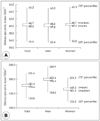 | Fig. 1Distribution of dietary glycemic index (A) and dietary glycemic load (B) in Korean men (n = 3,092) and women (n = 4,848). 1) DGI and DGL were calculated using glucose as the reference food. |
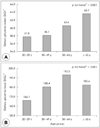 | Fig. 2Dietary glycemic index (A) and dietary glycemic load (B) according to age group in Korean adults (n = 7,940). 1) DGI and DGL were calculated using glucose as the reference food, 2) Adjusted for sex, education, income, BMI, current smoking, current alcohol use, physical activity, and daily energy intake. |
Table 2
Characteristics of study subjects (n = 7,940)

1) Categorical variables were tested by sex using chi-square test and continuous variables were tested by sex using student's t-test 2) Current alcohol use was assigned as 'yes' if subjects drank a glass of alcohol or more per month over the previous year 3) Physical activity was assigned as 'yes' if subjects engaged in physical activity at high intensity more than 20 minutes at least 3 days or more per week over the previous week
References
1. Ministry of Health and Welfare. The Korea National Health and Nutrition Examination Survey 2008. 2009. Seoul:
2. Gaesser GA. Carbohydrate quantity and quality in relation to body mass index. J Am Diet Assoc. 2007. 107(10):1768–1780.

3. McKeown NM, Meigs JB, Liu S, Rogers G, Yoshida M, Saltzman E, Jacques PF. Dietary carbohydrates and cardiovascular disease risk factors in the Framingham offspring cohort. J Am Coll Nutr. 2009. 28(2):150–158.

4. Jenkins DJ, Wolever TM, Taylor RH, Barker H, Fielden H, Baldwin JM, Bowling AC, Newman HC, Jenkins AL, Goff DV. Glycemic index of foods: a physiological basis for carbohydrate exchange. Am J Clin Nutr. 1981. 34(3):362–366.

5. Salmerón J, Ascherio A, Rimm EB, Colditz GA, Spiegelman D, Jenkins DJ, Stampfer MJ, Wing AL, Willett WC. Dietary fiber, glycemic load, and risk of NIDDM in men. Diabetes Care. 1997. 20(4):545–550.

6. Murakami K, Sasaki S, Takahashi Y, Okubo H, Hosoi Y, Horiguchi H, Oguma E, Kayama F. Dietary glycemic index and load in relation to metabolic risk factors in Japanese female farmers with traditional dietary habits. Am J Clin Nutr. 2006. 83(5):1161–1169.

7. Gellar L, Nansel TR. High and low glycemic index mixed meals and blood glucose in youth with type 2 diabetes or impaired glucose tolerance. J Pediatr. 2009. 154(3):455–458.

8. Schulze MB, Liu S, Rimm EB, Manson JE, Willett WC, Hu FB. Glycemic index, glycemic load, and dietary fiber intake and incidence of type 2 diabetes in younger and middle-aged women. Am J Clin Nutr. 2004. 80(2):348–356.

9. Denova-Gutiérrez E, Huitrón-Bravo G, Talavera JO, Castañón S, Gallegos-Carrillo K, Flores Y, Salmerón J. Dietary glycemic index, dietary glycemic load, blood lipids, and coronary heart disease. J Nutr Metab. 2010. doi: 10.1155/2010/170680.

10. Levitan EB, Cook NR, Stampfer MJ, Ridker PM, Rexrode KM, Buring JE, Manson JE, Liu S. Dietary glycemic index, dietary glycemic load, blood lipids, and C-reactive protein. Metabolism. 2008. 57(3):437–443.

11. Stevenson EJ, Astbury NM, Simpson EJ, Taylor MA, Macdonald IA. Fat oxidation during exercise and satiety during recovery are increased following a low-glycemic index breakfast in sedentary women. J Nutr. 2009. 139(5):890–897.

12. Kim K, Yun SH, Choi BY, Kim MK. Cross-sectional relationship between dietary carbohydrate, glycaemic index, glycaemic load and risk of the metabolic syndrome in a Korean population. Br J Nutr. 2008. 100(3):576–584.

13. Chai HJ, Hong H, Kim HS, Lee JS, Yu CH. Relationship between food intakes, glycemic index, glycemic load, and body weight among high school boys in Seoul. Korean J Nutr. 2008. 41(7):645–657.
14. Kim EK, Lee JS, Hong H, Yu CH. Association between glycemic index, glycemic load, dietary carbohydrates and diabetes from Korean national health and nutrition examination survey 2005. Korean J Nutr. 2009. 42(7):622–630.

15. The Rural Development Administration. Food composition table. 2006. 7th revision. Suwon:
16. Atkinson FS, Foster-Powell K, Brand-Miller JC. International tables of glycemic index and glycemic load values: 2008. Diabetes Care. 2008. 31(12):2281–2283.

17. Foster-Powell K, Holt SH, Brand-Miller JC. International table of glycemic index and glycemic load values: 2002. Am J Clin Nutr. 2002. 76(1):5–56.

18. Kim HY, Hong SG, Hwang SJ, Mok C, Park MH, Lee JY. Effect of saengshik on blood glucose response in healthy subjects. J Korean Soc Food Sci Nutr. 2007. 36(12):1553–1559.

19. Chen YJ, Sun FH, Wong SH, Huang YJ. Glycemic index and glycemic load of selected Chinese traditional foods. World J Gastroenterol. 2010. 16(12):1512–1517.

20. Murakami K, Sasaki S, Takahashi Y, Okubo H, Hirota N, Notsu A, Fukui M, Date C. Reproducibility and relative validity of dietary glycaemic index and load assessed with a self-administered diet-history questionnaire in Japanese adults. Br J Nutr. 2008. 99(3):639–648.

21. Du H, van der A DL, van Bakel MM, van der Kallen CJ, Blaak EE, van Greevenbroek MM, Jansen EH, Nijpels G, Stehouwer CD, Dekker JM, Feskens EJ. Glycemic index and glycemic load in relation to food and nutrient intake and metabolic risk factors in a Dutch population. Am J Clin Nutr. 2008. 87(3):655–661.

22. Nakashima M, Sakurai M, Nakamura K, Miura K, Yoshita K, Morikawa Y, Ishizaki M, Murakami K, Kido T, Naruse Y, Sasaki S, Nakagawa H. Dietary glycemic index, glycemic load and blood lipid levels in middle-aged Japanese men and women. J Atheroscler Thromb. 2010. 17(10):1082–1095.

23. Sahyoun NR, Anderson AL, Tylavsky FA, Lee JS, Sellmeyer DE, Harris TB. Health, Aging, and Body Composition Study. Dietary glycemic index and glycemic load and the risk of type 2 diabetes in older adults. Am J Clin Nutr. 2008. 87(1):126–131.

24. The Korean Nutrition Society. Dietary reference intakes for Koreans. 2010. 1st revision. Seoul:
25. Liese AD, Schulz M, Fang F, Wolever TM, D'Agostino RB Jr, Sparks KC, Mayer-Davis EJ. Dietary glycemic index and glycemic load, carbohydrate and fiber intake, and measures of insulin sensitivity, secretion, and adiposity in the Insulin Resistance Atherosclerosis Study. Diabetes Care. 2005. 28(12):2832–2838.





 PDF
PDF ePub
ePub Citation
Citation Print
Print


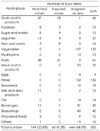
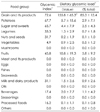
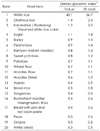
 XML Download
XML Download